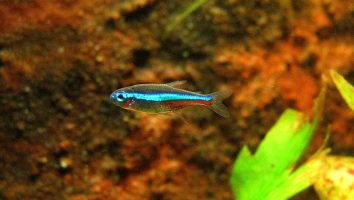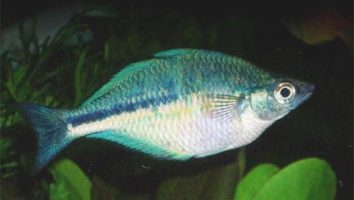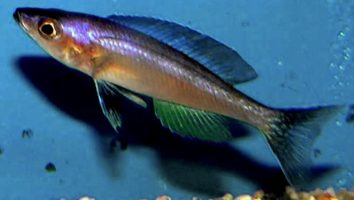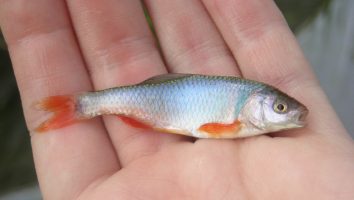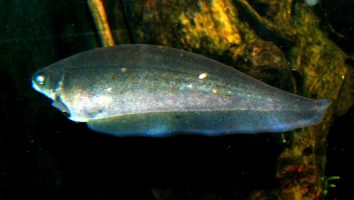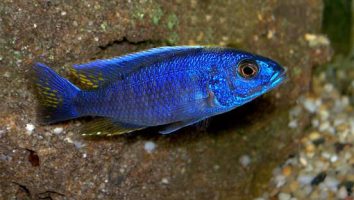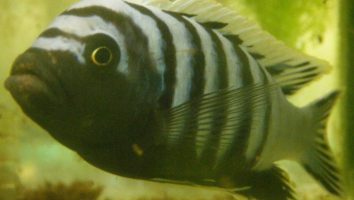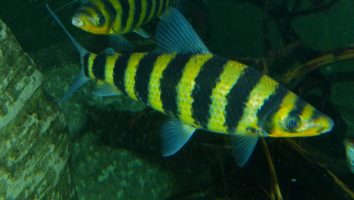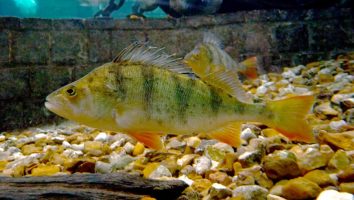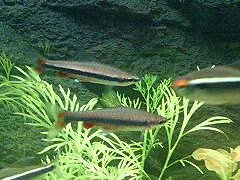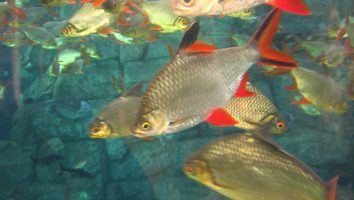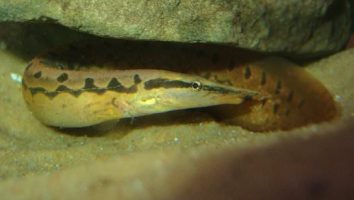The Red Eye Tetra (Moenkhausia sanctaefilomenae) is a peaceful and easy to care for freshwater fish that makes a great addition to any community tank.
This little guy is perfect for beginners, as they’re very forgiving when it comes to water conditions.
They’re also a very active fish, and will often be seen swimming in the middle or top of the tank.
If you’re looking for a fun and easy to care for fish, the Red Eye Tetra is a great choice!
Table of contents
Species overview
Red Eye Tetras (Moenkhausia sanctaefilomenae) are a small freshwater fish that’s popular in the aquarium scene. They’re found in Brazil, Guyana, and Suriname and prefer slow-moving waters with dense vegetation.
They’re a peaceful fish that does well in community tanks. In the wild, they eat a diet of small insects and larvae. In the aquarium, they’ll do well on a diet of small pellets or flakes.
The main draw of the Red Eye Tetra is its bright red eyes. This, combined with its small size, makes it a popular choice for nano aquariums.
Appearance
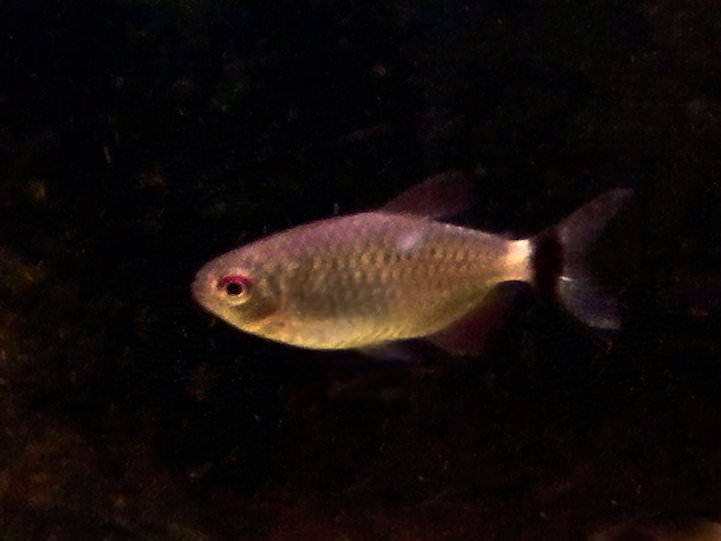
The first thing you’ll notice about this species is the deep red coloration that gives them their name. This coloration starts at the base of their mouths and goes all the way back to the end of their caudal fins.
You’ll also notice a dark stripe that runs along their sides. This stripe is usually black but can look more like a very dark blue. This dark line helps to accentuate the bright red coloration of the fish.
The fins on a Red Eye Tetra are all moderately sized and translucent. Their dorsal and anal fins are both short and begin about two-thirds of the way back on their bodies.
The caudal fin is forked and slightly taller than the thickest part of their bodies.
These fish have a very streamlined body that tapers off at the end. This shape helps them to be very speedy swimmers!
Lifespan
The average Red Eye Tetra lifespan is 5 to 8 years. As with most fish, their lifespan is going to be dictated by the quality of care they receive.
You can help your Red Eye Tetras live a long and healthy life by providing them with a spacious tank, plenty of hiding places, and a high-quality diet.
Size
The Red Eye Tetra grows to an adult size of about 1.5 inches long.
Tank
Tank Size
The recommended tank size for Red Eye Tetras is at least 10 gallons. If you plan on keeping a school of 6 or more fish, you’ll need an additional 2 to 4 gallons per fish.
As with most fish, the more space you can provide the better. Red Eye Tetras are a peaceful fish but they still need plenty of space to swim and explore. A larger tank will also allow you to keep more fish which is always a bonus.
Water Parameters
The Red Eye Tetra (Moenkhausia sanctaefilomenae) is a peaceful, schooling fish that does best in an aquarium of at least 20 gallons with a sandy substrate and plenty of cover in the form of plants, driftwood, and rocks.
While Red Eye Tetras are not fussy eaters, they will thrive on a diet of small live and frozen foods supplemented with high-quality flake food and pellets.
As with all fish, regular water changes are a must to keep the Red Eye Tetra healthy and happy.
Here are a few guidelines to help you maintain the proper water conditions for your Red Eye Tetra:
- Water temperature: 72 to 82 degrees Fahrenheit
- pH levels: 5.8 to 7.6
- Water hardness: 2 to 12 dGH
- Alkalinity Levels: 4-8 dKH
What To Put In Their Tank
Red Eye Tetras are a schooling fish, so we recommend keeping them in groups of 6 or more. They’re not overly aggressive, but they can be a little nippy with other species if they’re not in a school.
When it comes to plants, these fish aren’t going to bother them too much. They’re not known for nibbling or digging (unlike some other tetra species). This makes them a great addition to a planted aquarium!
In terms of decorations, you can really do whatever you want. They’re not picky when it comes to rocks, driftwood, or caves. Just make sure that there’s plenty of open swimming space since they’re an active species.
The substrate is another area where you have some freedom. They’re not fussy when it comes to gravel or sand. Just avoid anything too big or sharp since it could injure them.
Common Diseases
The Red Eye Tetra is a hardy little fish that doesn’t often fall ill. However, when they do get sick it’s usually because of something that could have been easily prevented.
The most common disease that affects this species is Neon Tetra Disease (NTD). This is a rather serious illness that is most often seen in captive fish.
The symptoms of this disease include:
-A loss of coloration
-A swollen abdomen
-Lethargy
-A loss of appetite
-Neon Tetra Disease is most often spread through contaminated food or water. It can also be passed on from fish to fish, so it’s important to quarantine any new fish that you add to your tank.
If you think that your fish might be affected by NTD, the best thing to do is to consult a vet. There is no known cure for this disease, but there are treatments that can help to ease the symptoms and make your fish more comfortable.
The best way to prevent this disease (or any other disease, for that matter) is to maintain a clean and healthy tank. This includes doing regular water changes, using a high-quality filter, and keeping an eye on the water parameters.
Behavior & Temperament
The Red Eye Tetra is a peaceful, schooling fish that does best in groups of 5 or more. They are shy fish that prefer to stay in the middle or upper levels of the tank.
The Red Eye Tetra is a very active swimmer and loves to play. They are known to be very curious fish that will often investigate anything new in their environment.
Although they are peaceful fish, the Red Eye Tetra can be nippy. They may nip at the fins of slower fish or long-finned fish. They may also nip at the fins of fish that they perceive as a threat.
Tank Mates
The Red Eye Tetra is a peaceful and social fish that does best in a group. In the wild, they can be found in schools of hundreds of fish.
In the home aquarium, a group of 5 or more is ideal. This will allow them to feel comfortable and display their natural behaviors.
When it comes to choosing tank mates, look for peaceful species that occupy different parts of the water column. Red Eye Tetras are mid-level swimmers and do best with fish that stay near the bottom or top of the tank.
Some good choices include:
- Corydoras Catfish
- Otocinclus Catfish
- Ghost Shrimp
- Amano Shrimp
- Cherry Shrimp
- Raspbora Tetras
- Neon Tetras
- Cardinal Tetras
Breeding
Red eye tetras are a schooling fish that can be found in the rivers of South America. They’re a popular choice for home aquariums because of their peaceful nature and beautiful coloration.
Red eye tetras reach maturity at around 6 months old. At that point, they’ll start to form pairs. Once a pair has been formed, you can move them into a breeding tank.
The breeding tank should be at least 10 gallons and should have a lot of hiding places. Driftwood, caves, and plants are all good choices. The water temperature should be between 75 and 82 degrees Fahrenheit.
The female will lay her eggs on the plants in the tank. After she lays them, the male will fertilize them. Once that’s done, the parents should be removed from the tank.
The eggs will hatch in about 24 hours. The fry will feed on the Infusoria in the tank for the first few days. After that, you can start feeding them baby brine shrimp and other small foods.
Conclusion
The Red Eye Tetra is a great fish for beginners and experienced fishkeepers alike. They’re easy to care for, peaceful, and make a great addition to any community tank.
If you’re looking for a beautiful and low-maintenance fish, the Red Eye Tetra is a great choice.
We hope this guide has helped you learn everything you need to know about caring for Red Eye Tetras. If you have any questions or comments, please don’t hesitate to reach out to us. We’re always happy to help!

